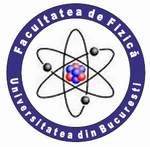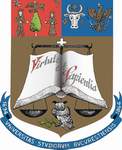| |
 |
UNIVERSITY OF BUCHAREST
FACULTY OF PHYSICS Guest
2025-10-05 22:33 |
 |
|
|
|
Conference: Bucharest University Faculty of Physics 2025 Meeting
Section: Biophysics; Medical Physics
Title:
Comparison of calibration curve between simulation computed tomography and CBCT imaging acquisition
Authors:
Magda-Adelina MIHALCEA, Ionut DUMITRU, Tia POPESCU, Mihai BÂRHALĂ
*
Affiliation:
1) University of Bucharest, Atomistilor Street, No. 405, Magurele 077125
2) Neolife Medical Centre-Enayati, 8A Gheorghe Ionescu Sisești Street, Bucharest 013823
E-mail
mihalceamagdaadelina@gmail.com
Keywords:
CT, CBCT, HU, electron density,
Abstract:
A comparison of the calibration curve between computed tomography (CT) and cone-beam computed tomography (CBCT) is necessary for the dose accuracy estimation in radiotherapy. In this study, the experiment was performed using a standardized phantom, which facilitates objective and reproducible evaluation of the relation between Hounsfield units (HU) and corresponding electron densities. In CT, the calibration curve produced was consistent with minimal variations, showing the precision and reliability of the machine used in a controlled setting. Recently, CBCT imaging has shown remarkable deviations in the same density points, particularly in the regions with high- and low-density materials, due to artifacts typically present in the technology, such as dispersion and non-uniform attenuation of radiation. Thus, it was determined that there is a significant discrepancy between the calibration curves produced by the two methods. This finding suggests that the direct use of CBCT for dose calculation, without additional corrections, may introduce errors. However, the results indicate that the implementation of image correction and recalibration methodologies for CBCT images based on data on phantom measurements has the potential to considerably improve the dosimetric accuracy. The study demonstrates the importance of periodically validating of CBCT equipment and creating system-specific calibration curves. The use of this machine is twofold: firstly, in patient targeting and, secondly, in the execution of adaptive dosimetric targets. This procedure contributes to radiotherapy to be more safely and effectively delivered.
References:
Paul Symonds, J. M. (2019). Walter and Miller's textbook of Radiotherapy, Radiation Physics, Therapy and Oncology. ELSEVIER.
Varian. (2017, august 13). Introducing Halcyon: An Innovative Treatment Platform. https://www.varian.com/why-varian/introducing-halcyon-innovative-treatment-platform.
|
|
|
|

